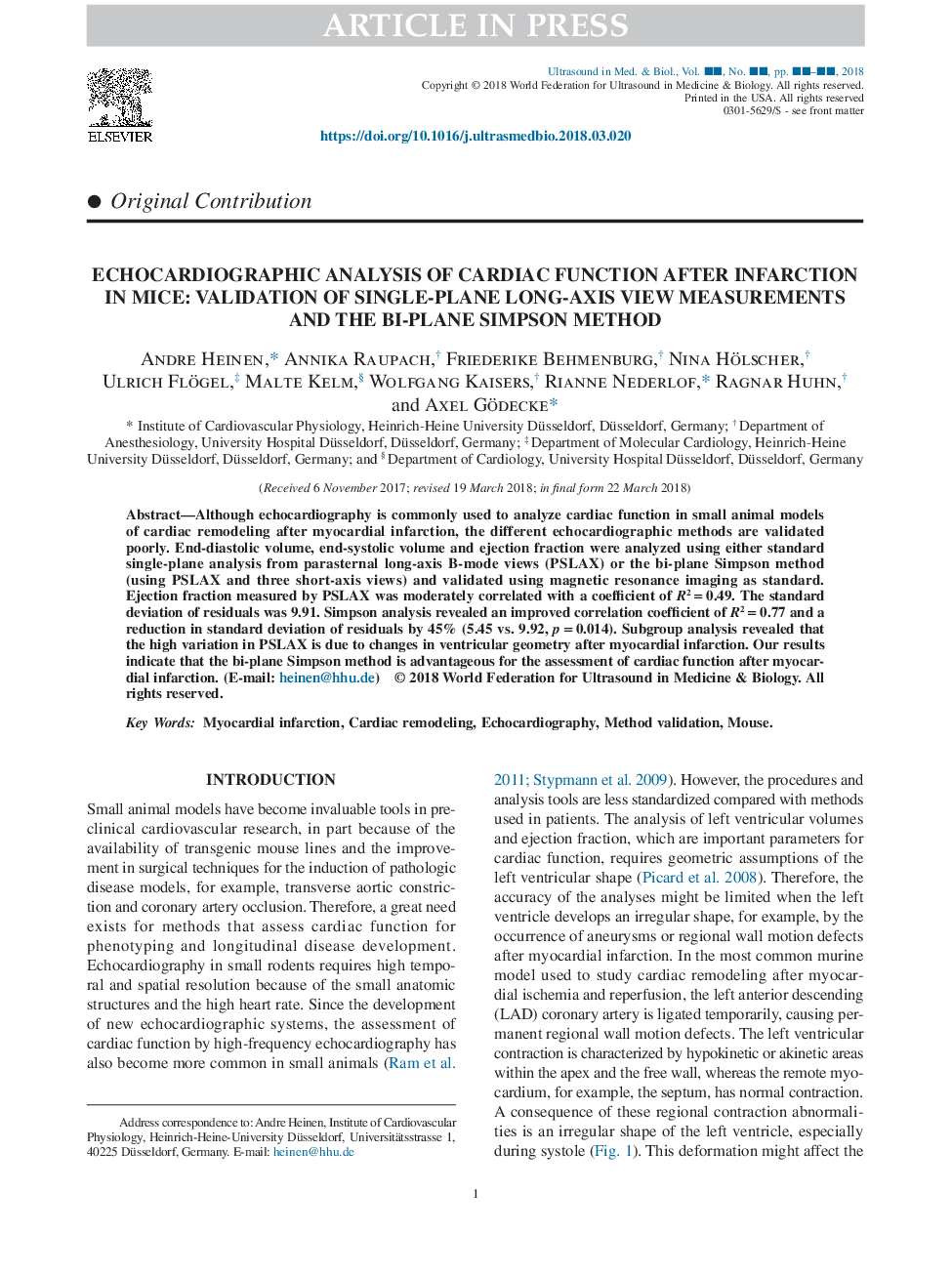| Article ID | Journal | Published Year | Pages | File Type |
|---|---|---|---|---|
| 8131016 | Ultrasound in Medicine & Biology | 2018 | 12 Pages |
Abstract
Although echocardiography is commonly used to analyze cardiac function in small animal models of cardiac remodeling after myocardial infarction, the different echocardiographic methods are validated poorly. End-diastolic volume, end-systolic volume and ejection fraction were analyzed using either standard single-plane analysis from parasternal long-axis B-mode views (PSLAX) or the bi-plane Simpson method (using PSLAX and three short-axis views) and validated using magnetic resonance imaging as standard. Ejection fraction measured by PSLAX was moderately correlated with a coefficient of R2â=â0.49. The standard deviation of residuals was 9.91. Simpson analysis revealed an improved correlation coefficient of R2â=â0.77 and a reduction in standard deviation of residuals by 45% (5.45 vs. 9.92, pâ=â0.014). Subgroup analysis revealed that the high variation in PSLAX is due to changes in ventricular geometry after myocardial infarction. Our results indicate that the bi-plane Simpson method is advantageous for the assessment of cardiac function after myocardial infarction.
Related Topics
Physical Sciences and Engineering
Physics and Astronomy
Acoustics and Ultrasonics
Authors
Andre Heinen, Annika Raupach, Friederike Behmenburg, Nina Hölscher, Ulrich Flögel, Malte Kelm, Wolfgang Kaisers, Rianne Nederlof, Ragnar Huhn, Axel Gödecke,
